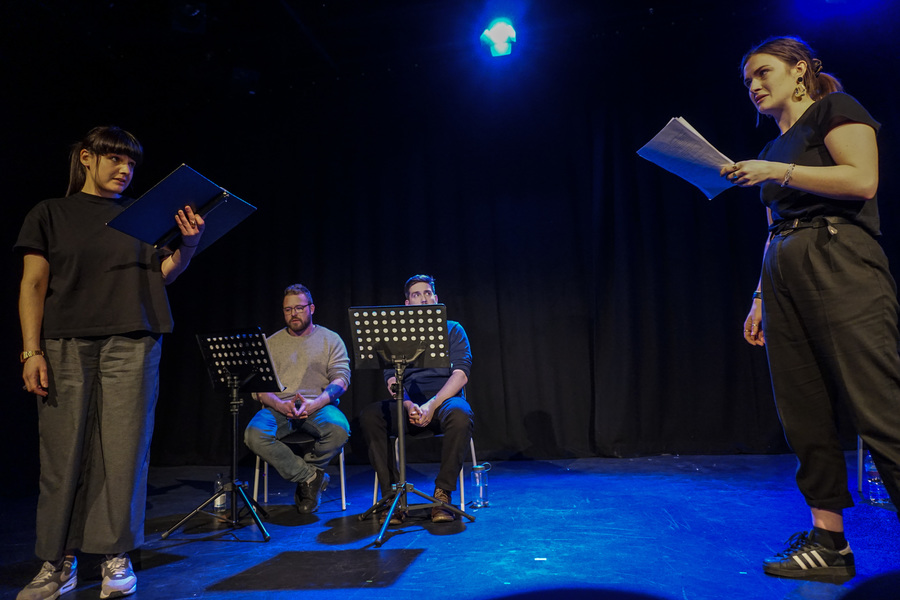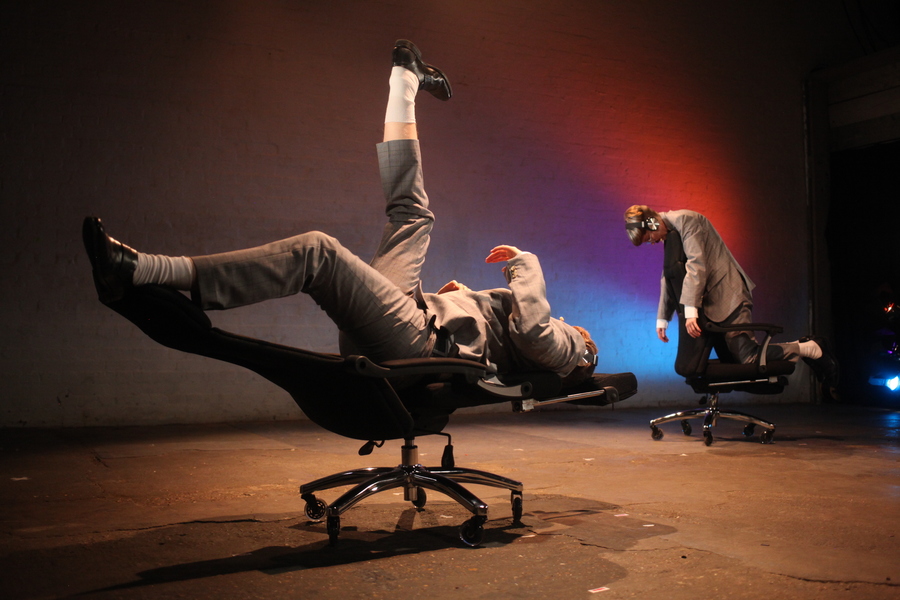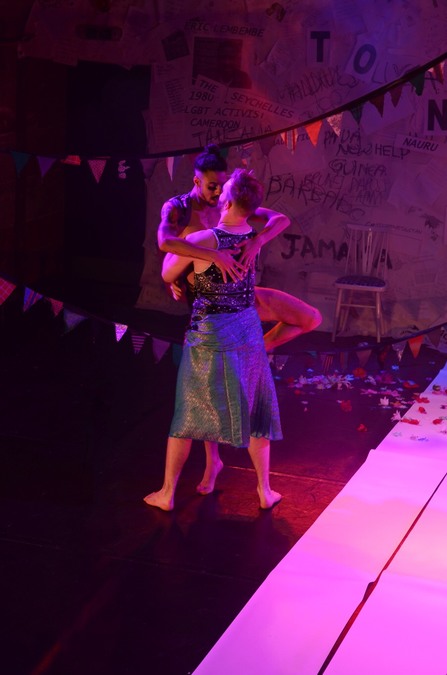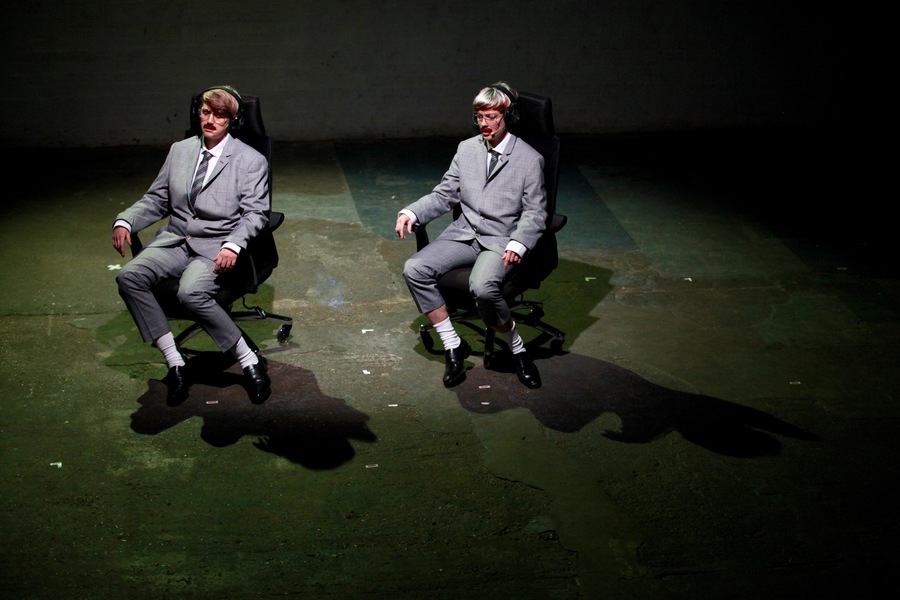In the Spotlight: LGBTQ+ Theatre in Scotland
We look at what can be done to keep LGBTQ+ stories on the Scottish stage year-round
It’s spring, and we're steadily moving away from LGBT+ History Month in Scotland, which took place in February. This year's theme was CATALYST: 50 Years of Activism, which acknowledged the work of activists who, in the 50 years since Stonewall, have worked tirelessly to promote and embed LGBT+ history and experiences into the fabric of our everyday being.
It goes without saying that when you shine a light on something that's usually in darkness, the darkness feels more potent when the light finally goes out. So, with the theatre company Shift's The Pride Plays, Scotland's first ever LGBTQI+ playwright festival, and LGBT+ History Month ending a few weeks shy of the Ides of March, the question remains: what more could be done to maintain the level of LGBT+ representation in Scottish theatre?
Queerness In Captivity?
Theatre director, playwright and poet, Drew Taylor-Wilson, has vociferously worked as a champion of LGBT+ representation over the last decade, and his new play, Captivity, was performed as a rehearsed reading at The Pride Plays. One seminal piece in his back catalogue is 44 Stories, which was named after the 44 countries where – at the time of the Glasgow Commonwealth Games in 2014 – homosexuality was still illegal, and in some places, punishable by death.
“I’ve been flying that flag, actively creating and putting out into the realm LGBT work since I started," explains Taylor-Wilson. "Back then, I was one of only a few artists overtly making work that had LGBT narratives consistently as part of the work. Now I find that that’s not the case, and that’s beautiful,” he explains.
Does the Mainstream Have to be Mundane?
In 2016, queer activist, artist and storyteller, Lindsay Amer wrote in The Scottish Journal of Performance: “When queer stories begin to be told and treated with the same level of normalcy with which heterosexual stories are told, then queerness itself will be perceived as the everyday, mundane way of life that it is, rather than the inflammatory, inappropriate calamity it is still treated as today.”
Arguably, the mainstream representation of queerness is commercialised homosexuality. Taylor-Wilson comments that one trend is the dramatisation of the AIDS crisis, particularly at the Edinburgh Festival Fringe. “It’s about commodification, of course, but it’s about a patriarchal, white supremacist structure that influences the LGBT+ stories that we are hearing," he explains.
"There is no coincidence that the most popular queer stories to come out in pop culture over the last two decades are about men dealing with the AIDS crisis. We keep hearing about it… now, of course, that is a horrible moment about LGBT history, but there are other stories to tell… I think we still have a long way to go in how our narrative is reflecting our understanding of what it means to be a queer person in contemporary Britain,” he continues.
Programming Queer Voices
Scottish theatre programmes are consistently hampered by a lack of narratives depicting the fight for acceptance of variant genders as well as trans rights and visibility – too often queer women and protected characteristics are neglected in theatre.
Live artist and theatremaker Ivor MacAskill, the creator of unique performances for children and adults such as Gendersaurus Rex and MOOT MOOT, suggests that the inability to fit queer experiences onto stage settings could be a possibility.
"For me, some of the most exciting queer performances are messy and sexy responses to artists' own autobiographies [and] so are performed by and are about the bodies of the queer artists who create them and that often sits outside of a new writing or play context," MacAskill says.
Steven Thomson, the Creative Director of OutSpoken Arts Scotland, the professional arts organisation that focuses on those people with the protected characteristics, describes a lot of the more regular commissions as "sanitised."
“There are a lot of artists in the community who feel that queer space is being eroded," Thomson begins. "I think there is a bit of push and pull in the queer community about having an identifiable racial community, where queer artists don’t see themselves fitting into the mainstream audience.
“The issue to a certain extent is the visibility of the artists through the organisation that specifically champions them. When the artists are being commissioned, it tends to be discreet and irregular. Young artists are looking for role models, and if you aren’t being championed in a specific programme somewhere, then you aren’t being identified properly,” Thomson continues.
Lack of Queer Theatrical Spaces
Not only is there a lack of queer visibility in theatrical commissions, but MacAskill believes that the recent closure of queer theatrical spaces is perhaps magnifying the lack of queer visibility in the industry.
“For Scotland-based artists, there are few venues where this kind of work is supported,” says MacAskill.
“It's happening in clubs and cabaret settings instead. There is a massive void left by the loss of the Arches which was a place for experimentation and developing work that was queer in both form and content and thus might defy categorisation and the usual funding streams. The last event at the Arches was the spectacularly rousing performance party, Queer Futures – we didn't know that the future would be the closure of the venue and many of the artists involved not getting paid or having anywhere to make future work.”
A Solution?
The answer, again, seems to lie in youth education and better programming.
“We need more opportunities and places for artists, particularly younger artists, to connect with audiences in a queer rainbow of performance modes and contexts, at all stages of development and scale,” says MacAskill. “We need spaces and support to make the work and then we need promoters outside of the Central Belt to be braver about their programming.”
“Places like the National Theatre, the Tron, the Lyceum… what they’re not doing is placing these stories in the work that they are commissioning,” Taylor-Wilson adds. “[Not] enough work is being commissioned that is entrenching LGBT voices in their narratives, and these are the companies that are deciding how these voices are being put together, how the storylines are portrayed, and how these voices are being represented. Programming is happening, but only because good artists are making that work.”
That's not to say there's no hope for Scottish theatre; Taylor-Wilson is currently writing a work which celebrates the millennial experience through four differing demographics. “I’m so excited to be able to put those narratives out into the realm as part of a national tour in the autumn,” he says. “I’m trying!”
Meanwhile, MacAskill stresses the importance of saving the spaces for drag and cabaret alongside the staging of other queer experiences, and OutSpoken continue to champion the protected characteristics of artists and their art.
However, the lack of spaces for queer artists in Scotland, mentioned by Thomson, is a problem, and the loss of high-profile events, such as Glasgay – which closed in 2015 after failing to secure Creative Scotland funding – has caused after-shocks that are still felt in the community. The Pride Plays were right to stress that we are now half a century on from Stonewall, and today we're working towards a new normal, where queer stories are told as much as heterosexual ones. But with everything, progress is slow and bumpy.
What's Next?
What will it look like on the other side? In 2016, Amer speculated that “this new queer normalcy might even force another reclamation of the word ‘queer.’” But does the word have to change, or be reclaimed? Can’t the methods of its representations change, just as the experience changes? Or does something have to lose its magic when it becomes ‘normal’? And who says 'normal' is fashionable, anyway?




